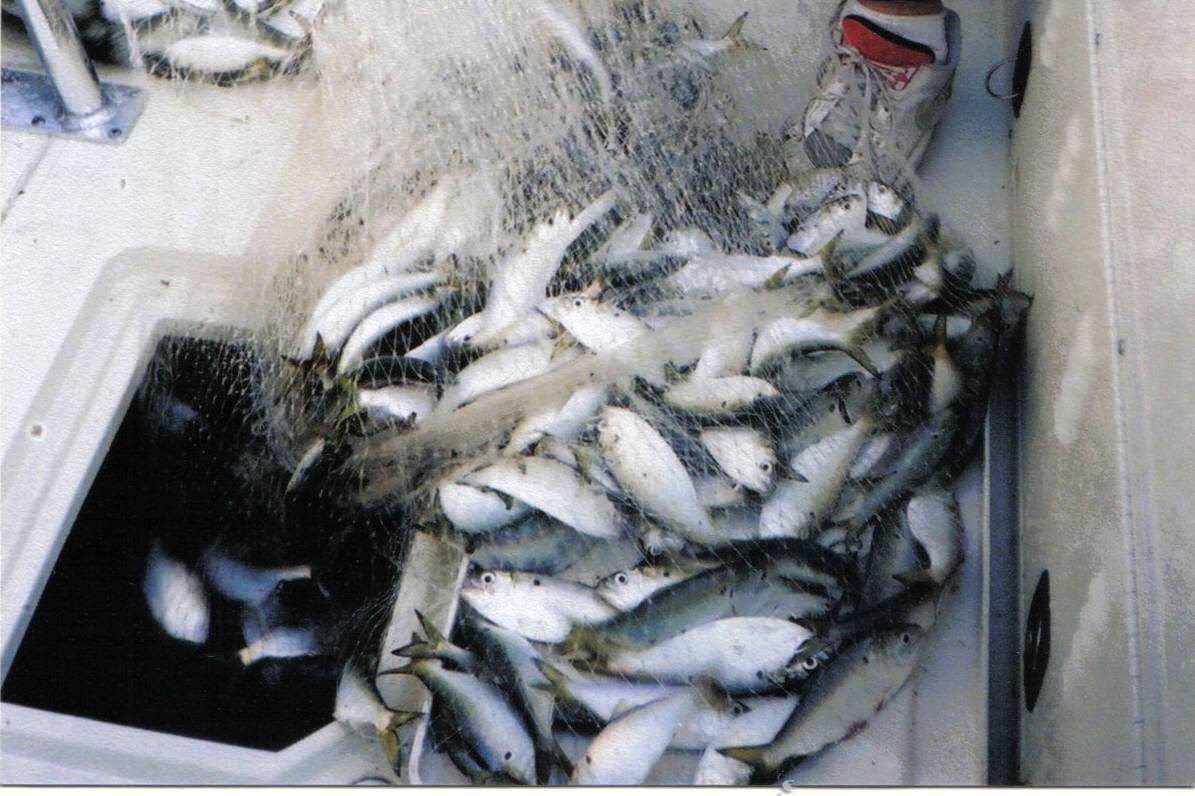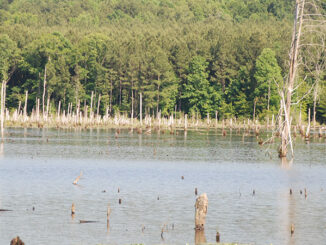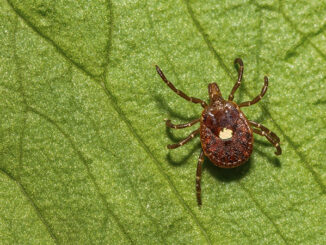
Variety is the spice of king mackerel fishing
Live baits are the most-productive ones for king mackerel, especially big kings. Some anglers continue to catch kings using a mixture of spoons, sea witches and lures. Some natural baits are used dead — including two that are favorites of tournament anglers.
The credit for the popularity of live baits for kings is often credited to pier fishermen. They can’t keep lures or rigged dead baits moving to attract kings. So they developed techniques like the trolley rigs that are popular in the Carolinas to tether live baits in a specific area to avoid constant tangles.
Anglers in boats began to use live baits when anchored up or drifting. And in the late 1970s, a few enterprising angles discovered they could troll at idle speeds with live baits and cover more water. The technique was originally a secret. But eventually, the word got out. Here is a sampler of preferred baits.
Live baits
• Menhaden, aka pogies, shad, fatback and bunker, are a favorite bait that travels in large schools and are usually easy to catch with a large cast net. Menhaden survive well in round or oval baitwells that are properly plumbed and have adequate flow.
• Mullet may be more popular with pier fishermen, but they are also popular with boat anglers. During the fall, mullet gather in schools and run the edges of channels, across large bays and just outside the surf. This makes them easy to catch with a large cast net. Mullet are extremely durable and survive well in baitwells, even those that are marginal for holding menhaden.
• Bluefish have gained in popularity over the past two decades and are excellent mackerel baits. Bluefish must be caught by hook and line. That makes the process of gathering them slow at times. But many fishermen consider them well worth the extra effort. Bluefish don’t do particularly well in baitwells, but when the water cools in the fall and holds more oxygen, their survival rate increases dramatically.
• Cigar minnows and sardines are found holding over and around most offshore structure along the Carolina coast. The water is usually too deep to cast-net them with much success, so most are caught on multi-hook Sabiki rigs. They have a similar cigar shape and may be caught together. Cigar minnows have smooth skin, and sardines have scales. Most fishermen prefer cigar minnows, but there are days sardines produce more strikes. Both are durable and survive well in most baitwells.
• Blue runners are small jacks are found around a few offshore structures. They are sometimes found feeding under cigar minnows and sardines. them. Blue runners must also be jigged with Sabiki rigs and require heavier rigs as they have sharp teeth and bite through smaller lines. They are durable and survive well in most baitwells.
Dead natural baits
• Cigar minnows, sardines and chub mackerel are smaller schooling fish that are caught in nets, brined, packaged whole and frozen for baits. All will catch kings but typically work better for smaller, more aggressive fish.
* Ribbonfish, properly called cutlassfish and also known as silver eels, are considered premium baits by many tournament anglers. Ribbonfish have bright silver sides and kings can see them from a long distance. There are several versions of ribbonfish rigs that allow them to move as if alive. Kings readily eat ribbonfish, but many fishermen believe their visibility also attracts kings that eat other baits.
• Spanish mackerel are primarily used by tournament fishermen. If one is caught while fishing for kings, it can be put back over immediately and fished in a stunned state. Spanish will not live in a baitwell; most are caught in advance and frozen to be used on rigs similar to ribbonfish rigs.





Be the first to comment